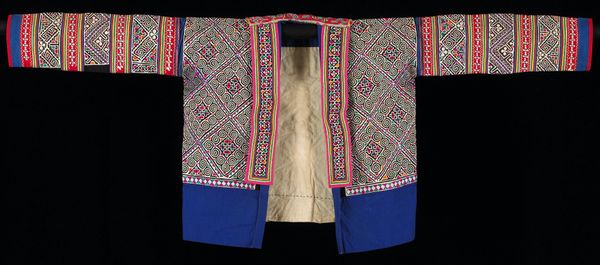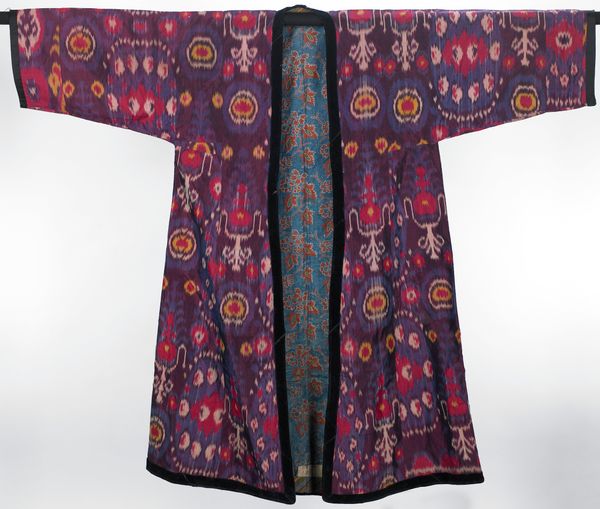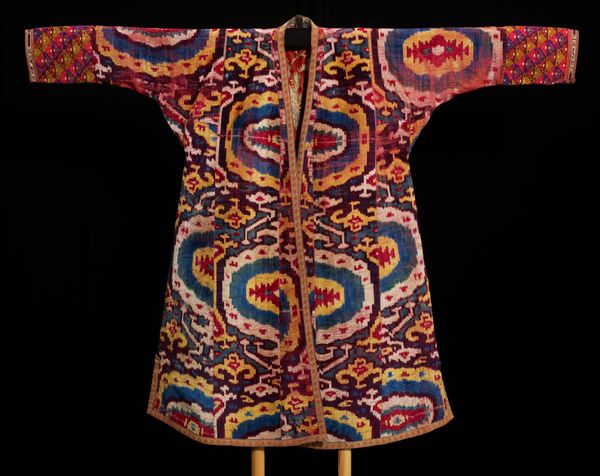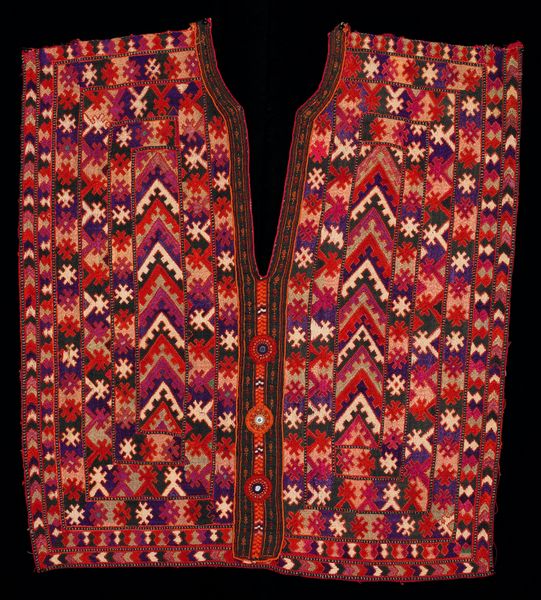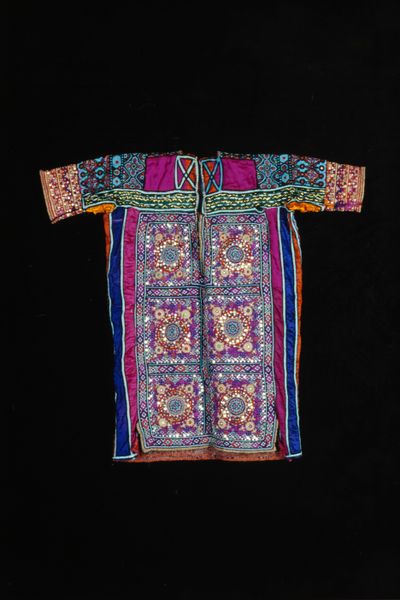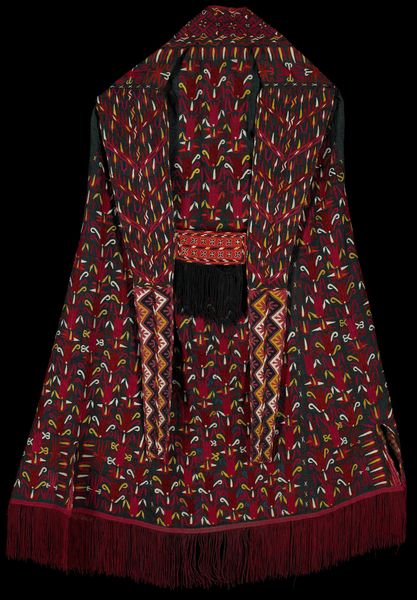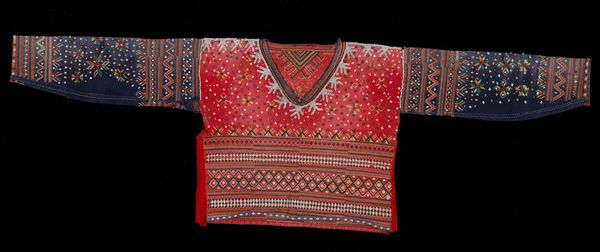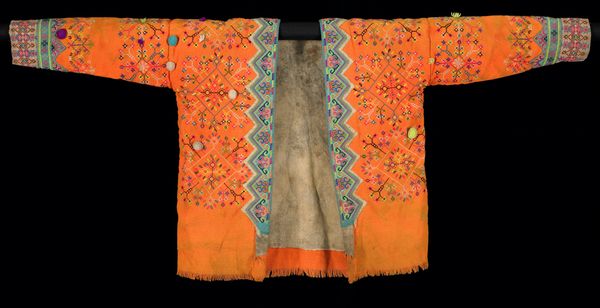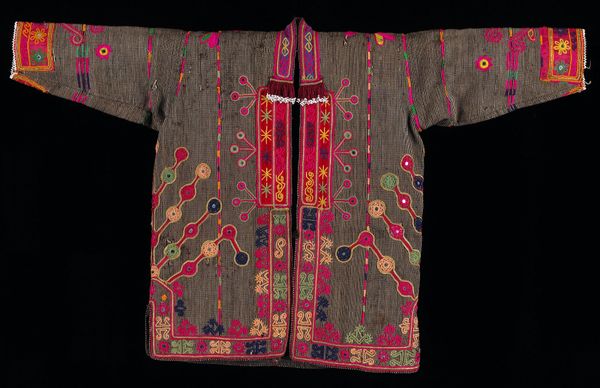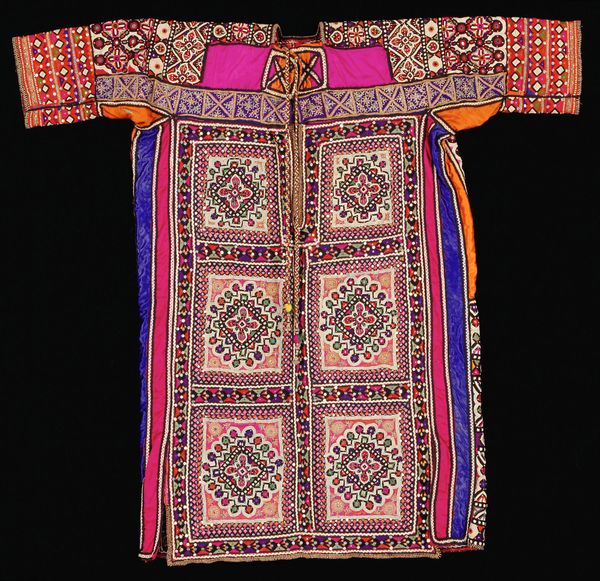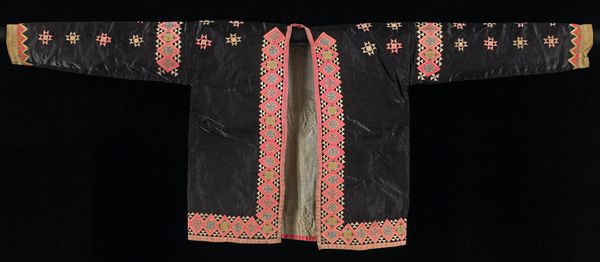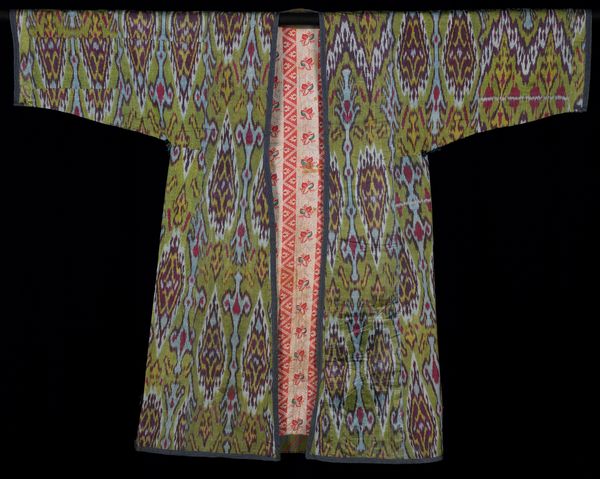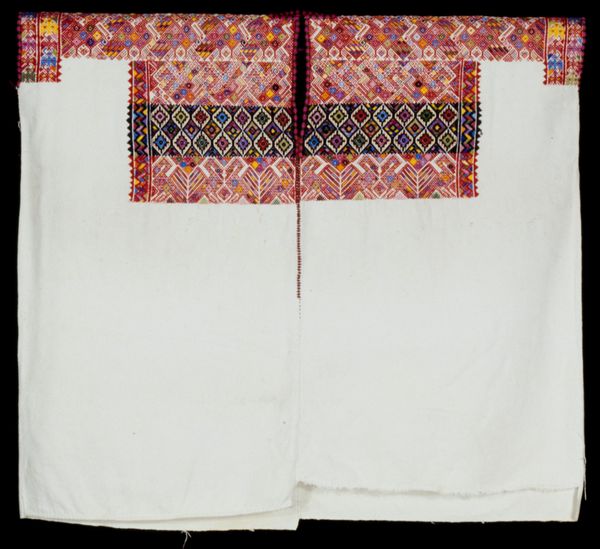
fibre-art, silk, textile
#
pattern heavy
#
pattern-and-decoration
#
fibre-art
#
silk
#
textile
#
collage layering style
#
fashion and textile design
#
hand-embroidered
#
pattern design
#
pattern repetition
#
textile design
#
decorative-art
#
imprinted textile
#
layered pattern
#
combined pattern
Dimensions: 51 1/2 x 62 1/2 in. (130.81 x 158.75 cm)
Copyright: Public Domain
This Woman's Robe was made anonymously, but almost certainly in Central Asia. The robe is called a 'munisak', a type of garment worn primarily by women across various Central Asian cultures. We see in it the vibrant use of color and bold, repeating patterns characteristic of textiles produced in this region. The creation of these robes was deeply rooted in the cultural and economic life of the communities that produced them. The intricate designs often carried symbolic meanings, reflecting local traditions, beliefs, and social status. Although we don’t know who made this, in its time this munisak robe would have been a visible symbol of identity, and of social and cultural affiliation. Studying similar examples in museum collections and private archives, along with historical accounts from the region, we can begin to understand the significance of this object and its place in the culture that created it.
Comments
minneapolisinstituteofart about 2 years ago
⋮
Of all the fabrics used to make the bold and dynamic resist-dyed ikat cloths of central Asia, the most admired and costly was velvet, which was used for wall hangings and household decorations as well as clothing. Costume in central Asia was a general indicator of social rank and geographic origin. A silk velvet ikat robe such as this one, with its dazzling, multicolored pattern and distinctive V-shaped neckline, would have been the most sumptuous garment in a wealthy bride’s trousseau. In many traditions, the munisak was first worn on her wedding day, draped over her head to serve as a veil; it thereafter would be worn on occasions that marked important rites of passage.
Join the conversation
Join millions of artists and users on Artera today and experience the ultimate creative platform.
